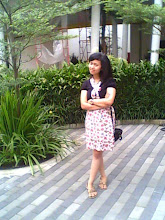According to my druggist, liver, which contains vitamin B, is a safeguard against anemia. For an adequate supply of this vitamin, eat plenty of tomatoes. If you are susceptible to colds, vitamin C may help you resist them. In the spring or during the summer, you can get vitamin D by a trip to a sunny beach. Vitamin D, derived from sunshine and found in fish lives oils, prevents rickets. When you look at a meal, decide upon a well balanced mean fortified with vitamins.
Selasa, 28 Oktober 2008
Health
Senin, 20 Oktober 2008
Holidays Without Parents
“I heard you both would go to your uncle’s house on next holiday, wouldn’t you?” asked mother.
“Yes, Mom. We miss him because we haven’t met him for two years,” replied Linar.
“Would you join us, Mom?” asked Lita.
“No, I am sorry. I am very busy next week. So you yourselves go there,” continued mother.
Hearing the conversation between his wife and his children, father didn’t want the children disappointed. Then he said, “Ok my dear, you can go with a driver wherever you want to. “Father gave money to them and said, “here you are. Be careful on the way.”
“In my opinion you are correct. Thank you very much. That’s very kind of you, Dad,” continued Linar.
Selasa, 14 Oktober 2008
The Historical Building Gedung Sate
This building is named Sate Building because at the top the roof there is a form that looks like a sate stick (a common Indonesian food, a row of cut meat, usually chicken).
It was constructured on July 27 1920 and was first used as the centre of the Dutch government when it established Bandung as the capital city of Indonesia.
The architectural style of Gedung Sate was chosen by the Dutch government based on design proposals submitted by the architect who were involved in this project Ir. I. Berger. Its architectural style is a combination of Indonesian, Spanish, and Thai styles.
Not surprisingly architecture experts in Indonesia and abroad said Gedung Sate as a monumental architectural achievement because of this unique style and design.
Now this building which is located at 22 Diponegoro street has many functions.
Gedung Sate as the centre the west java provincial government.
Gedung Sate as a tourist attraction.
It has long been a favorite attraction for tourists visit this building in order to get personal view of this historical building.
Many foreign tourist come to Bandung to see building because they feel an emotional connection to history of Gedung Sate.
The well maintained gardens surrounding Gedung Sate add its beauty.
Especially on Sunday morning, the green areas around Gedung Sate heve become a popular choice for people to relax with their family just sitting or doing sport.


